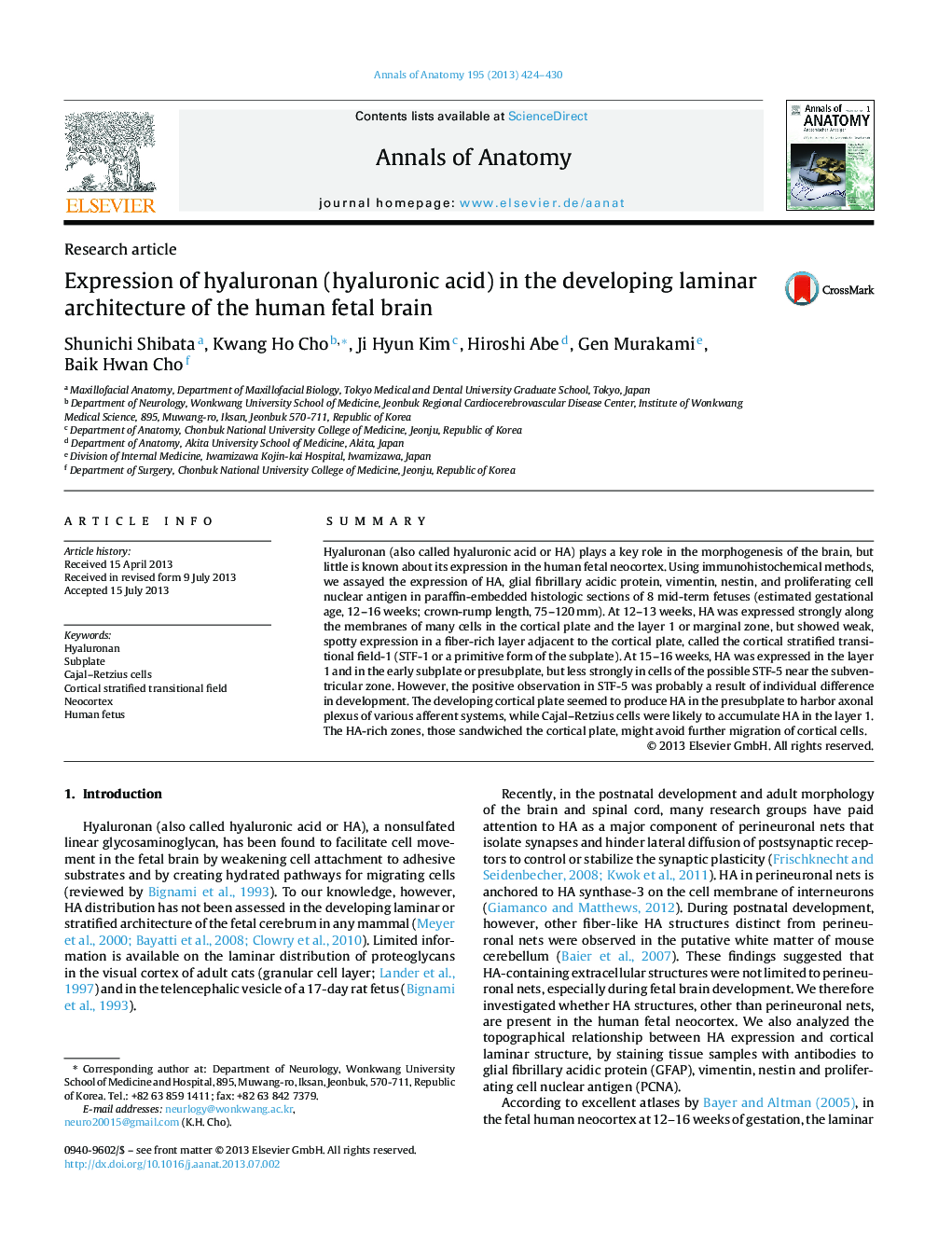| Article ID | Journal | Published Year | Pages | File Type |
|---|---|---|---|---|
| 8461289 | Annals of Anatomy - Anatomischer Anzeiger | 2013 | 7 Pages |
Abstract
Hyaluronan (also called hyaluronic acid or HA) plays a key role in the morphogenesis of the brain, but little is known about its expression in the human fetal neocortex. Using immunohistochemical methods, we assayed the expression of HA, glial fibrillary acidic protein, vimentin, nestin, and proliferating cell nuclear antigen in paraffin-embedded histologic sections of 8 mid-term fetuses (estimated gestational age, 12-16 weeks; crown-rump length, 75-120Â mm). At 12-13 weeks, HA was expressed strongly along the membranes of many cells in the cortical plate and the layer 1 or marginal zone, but showed weak, spotty expression in a fiber-rich layer adjacent to the cortical plate, called the cortical stratified transitional field-1 (STF-1 or a primitive form of the subplate). At 15-16 weeks, HA was expressed in the layer 1 and in the early subplate or presubplate, but less strongly in cells of the possible STF-5 near the subventricular zone. However, the positive observation in STF-5 was probably a result of individual difference in development. The developing cortical plate seemed to produce HA in the presubplate to harbor axonal plexus of various afferent systems, while Cajal-Retzius cells were likely to accumulate HA in the layer 1. The HA-rich zones, those sandwiched the cortical plate, might avoid further migration of cortical cells.
Related Topics
Life Sciences
Biochemistry, Genetics and Molecular Biology
Cell Biology
Authors
Shunichi Shibata, Kwang Ho Cho, Ji Hyun Kim, Hiroshi Abe, Gen Murakami, Baik Hwan Cho,
